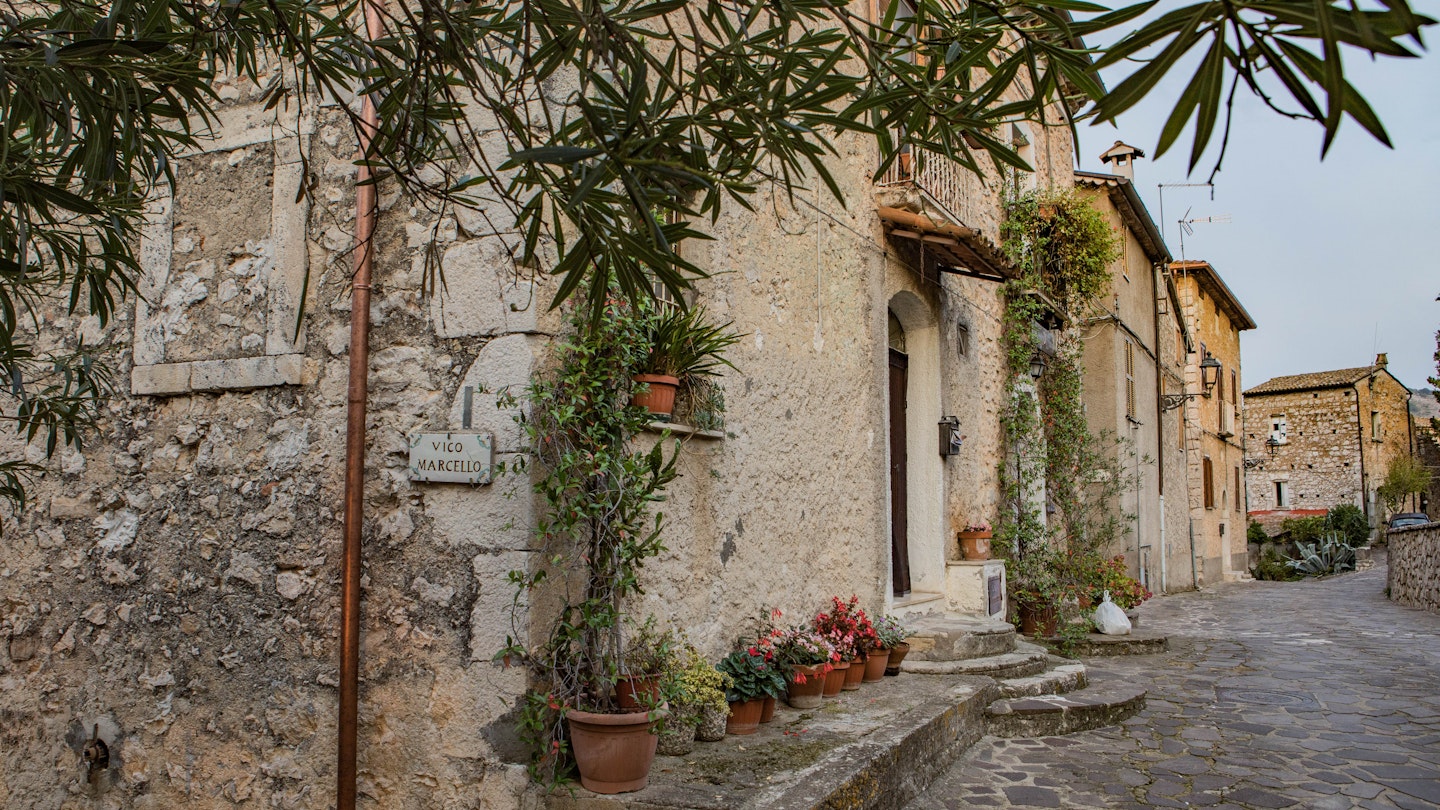Exploring Pico: A Hidden Italian Gem
The night before leaving the crowds of Rome behind, I found myself amidst a group of Italian lawyers who had never heard of Pico—my next destination—despite its proximity to the capital. Italy boasts countless small villages that provide an escape from the bustling tourist hotspots, allowing visitors to immerse themselves in authentic rural life, graced with olive trees and vineyards. Proximity to major towns and attractions makes Pico, a medieval village, a hidden treasure waiting to be explored.
A Charming Medieval Village
Pico remains underrated, yet it is among the best-preserved medieval towns in the Lazio province. Interestingly, I discovered Pico quite by accident during a travel game where I aimed to find a location in Italy on the same latitude as my hometown, Cleveland, Ohio. This serendipitous approach led me to this picturesque village.

Arriving at dawn, I was welcomed by the peaceful silence of the narrow cobblestone lanes. My journey towards the highest point in the village, where a castle stands, usually takes less than five minutes. However, frequent photography stops became the norm as I captured images of arched passageways and vibrant flowers emerging from the ancient stone buildings.
A Scenic View from the Castle
Upon reaching the peak, I witnessed the sun emerging from behind the Apennine Mountains, illuminating Italy’s Liri Valley and the surrounding landscape of olive groves and vineyards stretching as far as the eye can see.

Upon meeting Carlo Spada, the owner of Nenà al Borgo Castello, he shares, “Every morning, I can enjoy this beautiful view. It’s something that cannot be felt unless seen with your own eyes.” He left his corporate position to restore a building atop the ancient walls of Pico, transforming it into a guesthouse that offers culinary classes and village tours.
His connection to Pico runs deep; his parents and grandparents hailed from here. By reconnecting with his roots, Spada invites guests to experience traditional recipes passed down through generations.

Harvesting Olives in the Italian Countryside
The timing of my visit aligned perfectly with the olive harvest season, which spans from October to January. Families and friends gather in olive groves to pick fruit and rush to the mill, or frantoio, for crushing and oil extraction. Each household produces its own olive oil and sets aside the best olives for brining, a tradition that Spada embraces.
“Olives are an essential part of our lifestyle,” Spada explains while sharing a breakfast of panzanella, highlighting the importance of olives in the Mediterranean diet, a tradition dating back to the 8th century BC.
Spada generously involves me in the harvest, introducing me to the nearby village of Lenola for this experience. While not as well-known as Tuscany for olive cultivation, this region is prized for the Itrana varietal, highly regarded for its unique, spicy flavor.

Upon arrival at Hazienda Le Giardine, I met Giovanni Spirito, an olive cultivation expert who shared harvest techniques with Spada. An expansive net is laid out, collecting olives as they are plucked, either by hand or using an electric olive shaker for higher branches.
“We generally start early and enjoy a typical farmer’s lunch, which includes bread, cheese, and wine,” Spada reveals, emphasizing the communal aspect of the harvest.
Once completed, everyone gathers to lift the net and transfer olives to bins for transport to the olive mill.

Understanding Extra-Virgin Olive Oil
The premium quality of extra-virgin olive oil (EVOO) depends on numerous factors, including the maturity of olives, the weather conditions, and the timing of the harvest. Prompt delivery to the mill is essential, as prolonged exposure to air can result in oxidation, adversely affecting both flavor and beneficial properties of the oil.
While traditional methods involved hand-crushing olives with stones, the Frantoio Guglietta utilizes modern crushing technology, allowing for efficient processing within an hour. The lively atmosphere at the mill fosters camaraderie as local producers catch up and share experiences during the harvest season.

Finally, it’s time to sample the fruits of our labor. As the first drops of Spirito’s olive oil flow from the spigot, I’m captivated by its vibrant green hue—an entirely different experience from the EVOO I’m accustomed to. “It’s green gold,” Spada remarks.
Receiving a taste of Spirito’s olive oil, I realize the depth of flavor surpasses anything I’ve encountered before, leaving me forever changed. As a guest at Nenà al Borgo Castello, opportunities to visit the frantoio and other culinary experiences are available, enhancing the journey through this beautiful Italian region. Guests can also participate in engaging cooking classes within the historic setting of his ancient Roman kitchen, where generations of recipes come to life.





